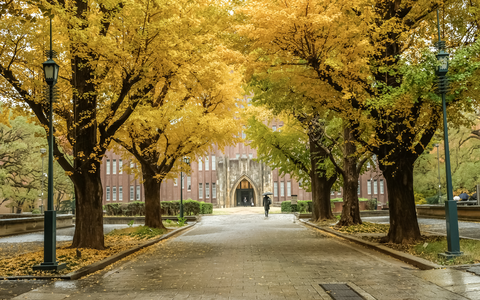 Due to an increase in applications and growing unpredictability in students’ college decisions, more colleges are using waitlists than in previous years. Many schools vary their usage of waitlists from year to year, based on their strategy of how many students to accept, as well as the “yield,” or percentage of admitted students who choose to attend. Students can hear about waitlist admission anytime between May 1st and late August.
Due to an increase in applications and growing unpredictability in students’ college decisions, more colleges are using waitlists than in previous years. Many schools vary their usage of waitlists from year to year, based on their strategy of how many students to accept, as well as the “yield,” or percentage of admitted students who choose to attend. Students can hear about waitlist admission anytime between May 1st and late August.
Yield has already declined in recent years. For example, Stanford’s yield declined from over 80% to under 70% from 2019 to 2020; Princeton’s from over 70% to 62%, and Yale’s from nearly 70% to 55%. For the Class of 2025, yield will be even more difficult to predict, and colleges will most likely draw more students from waitlists.
Last year, after the pandemic began, yield for the Class of 2024 declined at many selective schools. According to Rick Clark, director of undergraduate admissions at the Georgia Institute of Technology, “The waitlists are going to be obnoxious this year.” He expects them to be long and active, with colleges turning to them in April and continuing to do so until well into the summer.
How Likely is Waitlist Admission?
It is important for applicants on a waitlist to be realistic about their chances. Although being placed on a waitlist is more hopeful than being denied from a school, the NACAC (National Association of College Admissions Counseling) survey reported that overall in 2019 only 20% of students were accepted after taking waitlist positions and only 7% were admitted off a waitlist position to the most selective colleges.
When colleges accept students from the waitlist, they are typically looking at how many spots still need to be filled in the freshman class, which majors, residency locations, or other “hooks” are needed to round out this particular class, and how likely you are to attend if admitted.
Consider how your top college choices have used their waitlists in the past. In 2019, Stanford offered waitlist positions to 750 students, 580 students accepted the waitlist offer, and only 8 were ultimately offered admission. On the other hand, the University of Miami offered 8,795 waitlist positions, 2,143 students accepted the waitlist offer, and 366 students were admitted. The chart below shows a comparison among several selective schools of Waitlist Accepted Offers versus Waitlist Admission in 2019.
According to NYU’s Admissions office, “The number of students who have been admitted from the waitlist has varied widely in previous years. While during one recent year, we were not able to admit any students from the waitlist, in others we were able to admit hundreds of students. Again, the number of admission offers we can extend is contingent on the number of responses we get to our initial offers of admission, and we will have a better idea of what space is available after the admitted student response deadline.”
Inside Higher Ed reports that “In recent years, a Penn spokeswoman said, the number admitted off the waiting list has ranged from 20 to 175.”
Tips for Improving your Chances of Waitlist Admission
#1 Let the college know that you want to stay on the waitlist! Make sure you also commit and deposit at your top choice of your admitted schools.
#2 Send a letter to the waitlist college expressing your continued interest; and include any updated information about academics or activities since you last contacted them. In your letter, be genuine. If you would attend if accepted, say so. If not, state that you remain strongly interested in the college. If you have re-visited since you applied, discuss the specifics of your visit in your note. Summarize why the college is an excellent fit for you and mention unique strengths and experiences you would contribute to campus. If appropriate, include updates on awards, special academic achievements, or extracurricular projects that have occurred since you submitted your original application.
#3 Find out if the college will accept additional information, such as grades or letters of recommendation. Look at the college website and your waitlist offer to see what new information the college is willing to receive, if any. Colleges vary widely in this regard.
#4 Stay engaged in your academics. Colleges will be reviewing your senior year final grades. Strong grades will strengthen your chances of acceptance at your waitlist colleges.
This year has been a difficult one for many college applicants due the uncertainty caused by Covid. If you would like assistance in writing a letter of continued interest, weighing your college admissions options, or with any other aspect of high school planning and college admissions, contact Collegiate Gateway. As always, we’re happy to help!
Check out our events page for future college admissions presentations.



